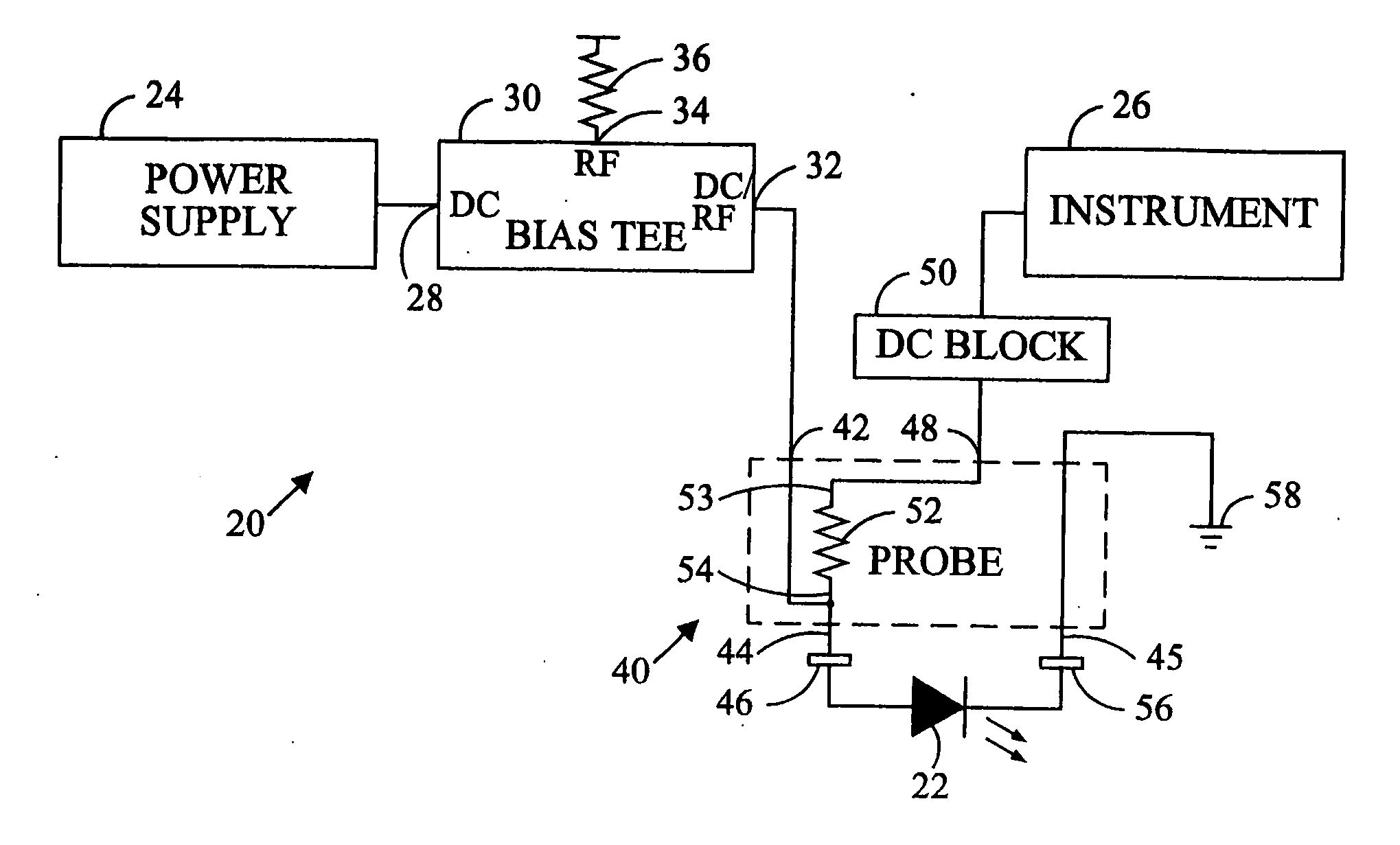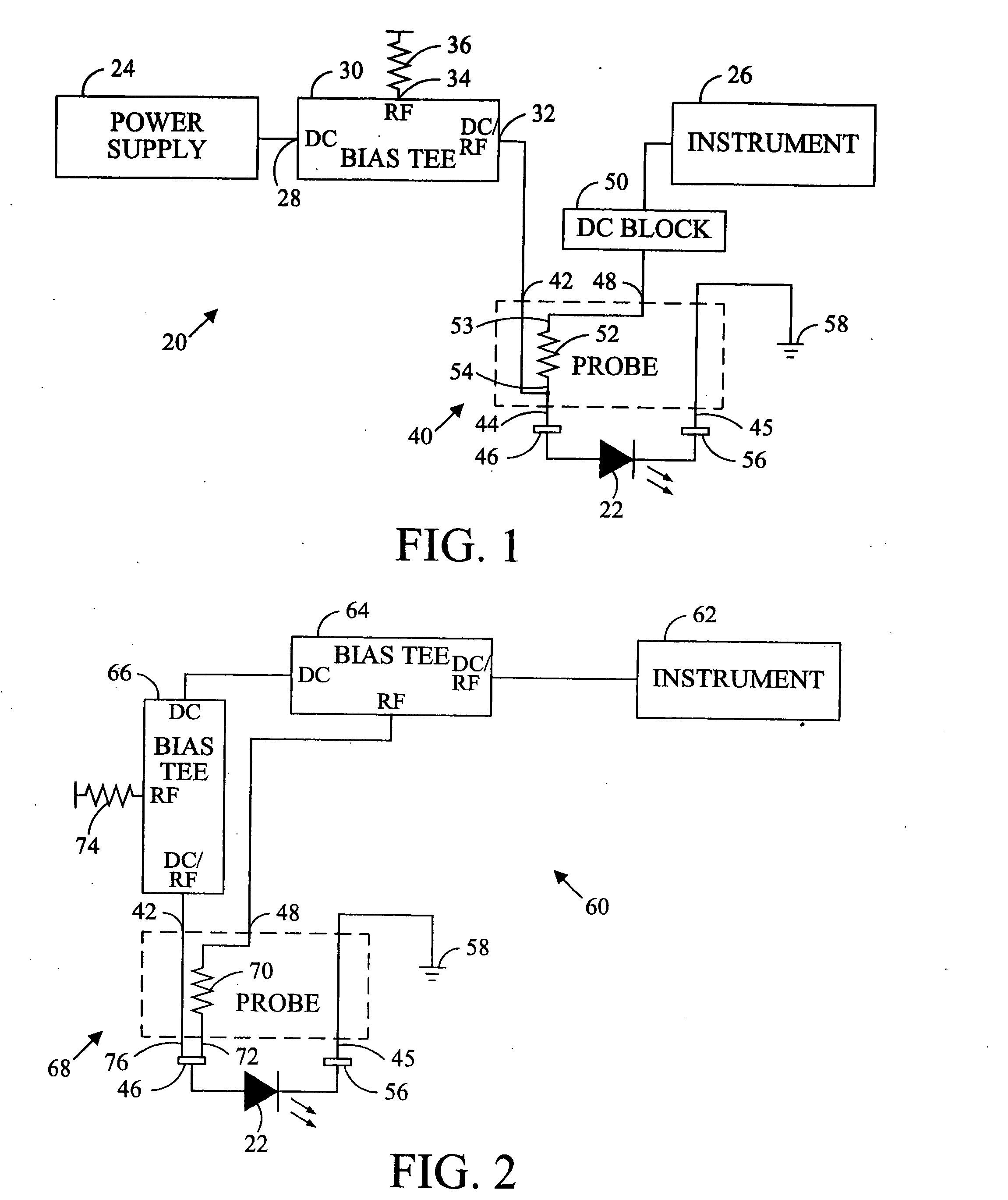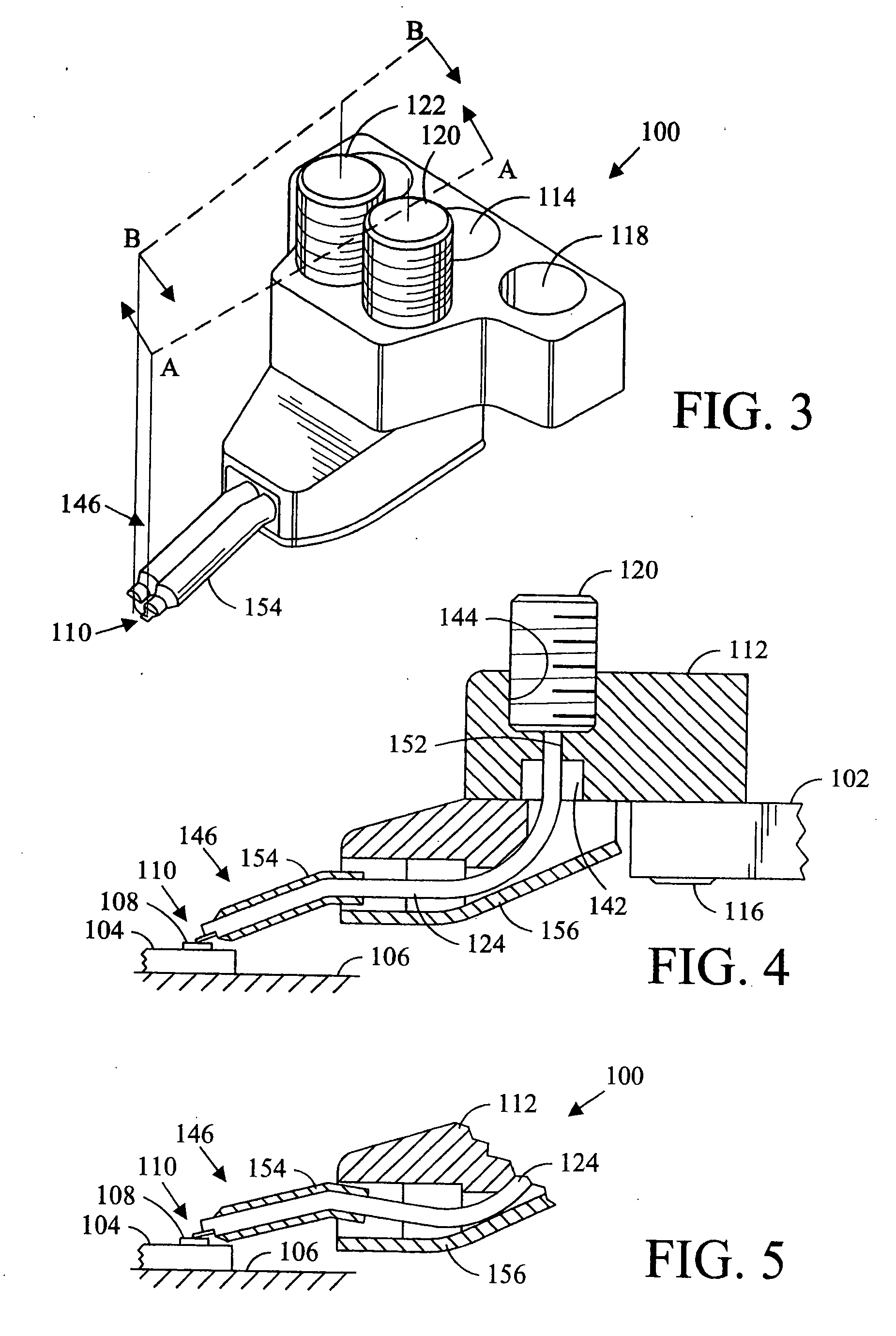Probe for combined signals
a combined signal and probe technology, applied in the direction of measurement devices, semiconductor/solid-state device testing/measurement, instruments, etc., can solve the problems of unsuitable higher-frequency unsuitable use of probing assemblies of the type just described, and difficulty in using typical microwave probes
- Summary
- Abstract
- Description
- Claims
- Application Information
AI Technical Summary
Problems solved by technology
Method used
Image
Examples
second embodiment
[0024] Referring to FIG. 2, in the probing system 60, the instrumentation 62 is the source of an offset modulation signal. The combined DC current and modulation signal are transmitted to a combined signal port of a first bias tee 64. In the first bias tee 64, the DC current and modulation signal components are separated. The modulation signal is transmitted to the first input port 48 of the combined signal probe 68 which is conductively connected to the first port of an impedance matching resistor 70. The second port of the impedance matching resistor 70 of the probe 68 is connected to a modulation signal contact tip 72 arranged to selectively engage the signal contact pad 46 of the DUT 22.
first embodiment
[0025] The DC current is transmitted from the first bias tee 64 to a second bias tee 66. The combined signal (DC / RF) port of the second bias tee 66 is connected to the second input port of the probe 42 which is conductively connected to a DC signal probe 76 arranged to engage the signal contact pad 46 of the DUT 22 when the modulation signal probe 72 is in engagement with the signal contact pad. An impedance matched termination for the modulation signal imposed on the conductor connecting the second bias tee 66 to the DC signal probe 76 is provided by a termination resistor 74 connected to the RF port of the second bias tee 66. As in the first embodiment, the modulation signal is applied to the signal contact pad 46 of the DUT 22 over a distortion minimizing impedance matched signal path while the DC current is simultaneously applied to the signal contact pad over a signal path that does not include the impedance matching resistor and, therefore, minimizes power dissipation.
[0026] R...
PUM
 Login to View More
Login to View More Abstract
Description
Claims
Application Information
 Login to View More
Login to View More - R&D
- Intellectual Property
- Life Sciences
- Materials
- Tech Scout
- Unparalleled Data Quality
- Higher Quality Content
- 60% Fewer Hallucinations
Browse by: Latest US Patents, China's latest patents, Technical Efficacy Thesaurus, Application Domain, Technology Topic, Popular Technical Reports.
© 2025 PatSnap. All rights reserved.Legal|Privacy policy|Modern Slavery Act Transparency Statement|Sitemap|About US| Contact US: help@patsnap.com



